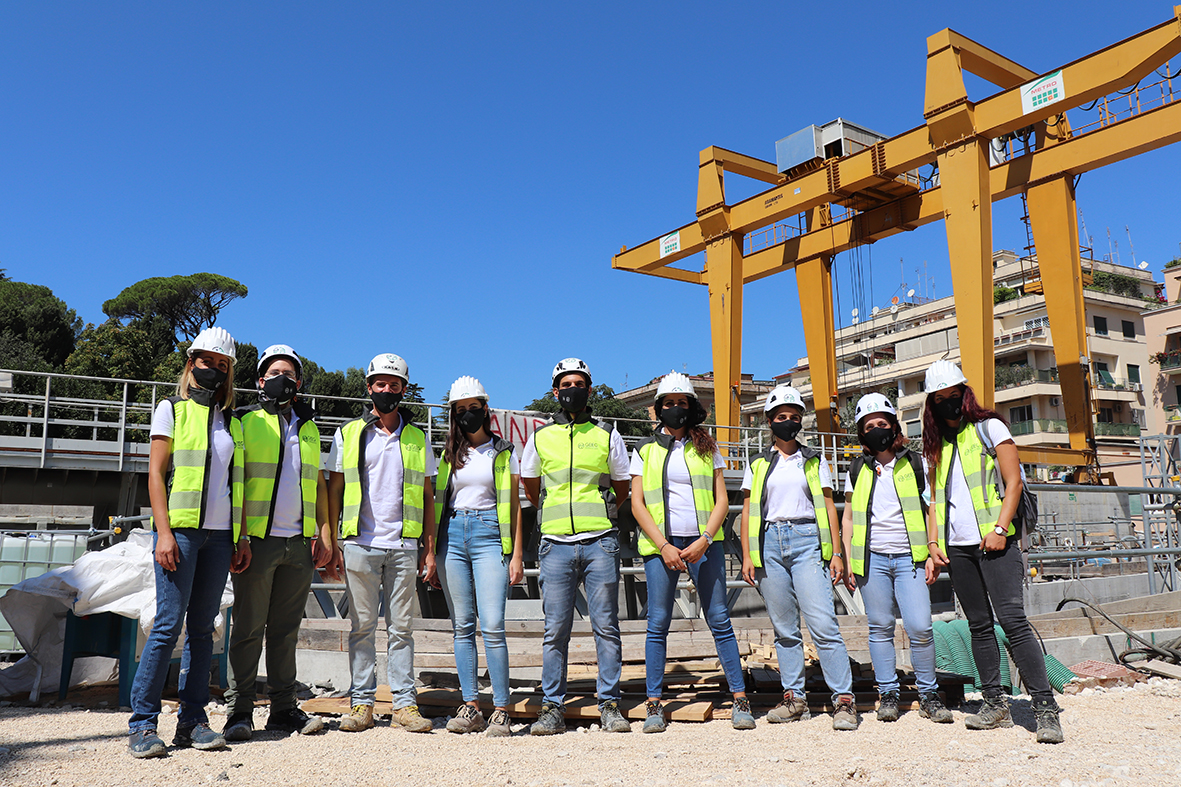Source article Il Giornale dell’Arte
Excavations for the new stations of Line C and the safeguarding of buildings and monuments
As it crosses the historic center of Rome, the C line of the metro doesn’t just travel through urban space but also through time. A full agreement between the consortium of construction companies, the municipality, and the Special Superintendency for Archaeology, Fine Arts, and Landscape of Rome has enabled a complex plan involving analysis, study, data processing, monitoring, and preservation to ensure the protection of millennia that underlie the fabric of a city that continues to grow. Work on the section that stretches from the eastern quadrant of the city to its northwestern corner began in 2006, and in 2013, construction sites for two very “sensitive” stations, Amba Aradam and Fori Imperiali, were opened.
These four kilometers are saturated with history and artifacts, both below and above ground. Interactions with archaeological layers mainly concern the construction of stations and ventilation shafts because the tunnels always run below the archaeological strata, typically around 10-12 meters below street level.
The preventive archaeological investigations have led to excavations at 22 sites, which, as with the Hadrian’s Auditoria discovered in 2009 at Piazza Venezia, have resulted in the discovery of numerous artifacts and the update of archaeological records in previously unexplored areas. The archaeological excavation campaign, conducted from the urban outskirts to the center, has allowed for the discovery of various items, including tombs and ritual pits from a Chalcolithic necropolis, ancient roadways, agricultural canal systems, large suburban villas, columbarium tombs, segments of Republican and Imperial-era aqueducts, ancient kilns, cisterns, or massive water reservoirs (holding up to 4 million liters of water).
Among the excavations for the Amba Aradam station, the most astonishing find was a Roman barracks dating back to the 2nd century AD, comprising over thirty rooms arranged along a corridor, adorned with wall frescoes and mosaic floors. Some of these mosaic floors feature sequences of geometric patterns of such sophistication that Superintendent Francesco Prosperetti remarked, “Metro C has proven to be an astounding archaeological site. There have been significant discoveries, among the most important made in Rome in recent years, culminating in the finding of these mosaic and fresco-adorned chambers.”
The site will be turned into a museum, as has already happened with many artifacts unearthed for the San Giovanni Station, and as is planned for the proposed Piazza Venezia station. Equally complex and delicate is the securing of buildings and monuments (over 50) that interact with the metro line.
This has entailed structural support operations involving shoring with containment piles for entire sections of the Aurelian Walls, the Basilica of Maxentius, the Temple of Venus and Roma in the Roman Forum, and on the Caelian Hill, the churches of Santo Stefano Rotondo and Santa Maria in Domnica.
However, all of this was preceded by a detailed study campaign, including: historical reconstruction of the buildings, comprehensive photographic documentation of the structural conditions, analysis of the mechanical properties and structural connections of the architectural elements and materials used in the structures, and the creation of complex mathematical models. With the help of specific software, these models accurately replicate the monument, allowing for the simulation of the effects of tunnel excavation on the structure and foundations.
All of this is followed by continuous monitoring of the effects of stress and vibrations on the structures. In summary, a radiograph of the building and a risk mapping are conducted to determine appropriate and specific preservation measures. This gives rise to the fourth Rome, one that encompasses the other three.


